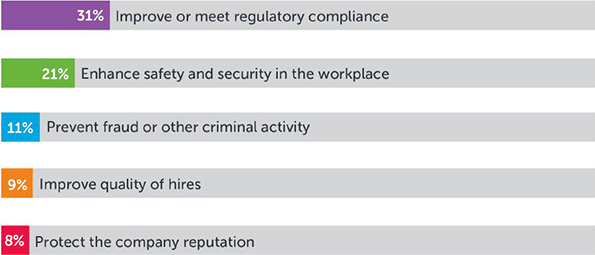October 10th, 2018 | Sterling
Improving the Candidate Experience Through Background Screening

Candidate experience is the driving factor in today’s hiring process. A good or bad candidate experience can have a direct impact on an organization’s reputation and profitability. Candidates who have had an overall negative hiring experience will take their alliances, product purchases and relationships elsewhere. Negative experiences impact the employer brand and can also diminish their ability to attract the “perfect” new talent for their company. In fact, over 50% of those who have a poor experience will not apply for jobs at that company again. As for the opposite, if a candidate had a positive experience, they will continue to increase a relationship with that potential employer. Candidates share their positive recruiting experiences with their inner circles (family, friends, peers) over 81% of the time and their negative experiences 66% of the time. Candidates also share positive (51%) and negative (34%) hiring experiences via social media (Glassdoor and LinkedIn).
Steve Smith, Vice President of Sales at Sterling, recently presented “Improving the Candidate Experience Through Background Screening” at a standing-room-only seminar at In-house Recruitment LIVE! in London. Steve explored the candidate touch points during the hiring process and shared best practices for HR and talent teams on how to improve their overall experience.
The Candidate Journey
Every single touch point that occurs between a job prospect and organization will define a candidate’s unique experience. Touch points include career website visits, application processes, conversations with recruiters, interview scheduling, career fairs and job offers. Organizations aim to deliver both a consistent and positive experience for every prospect. The desired collective impact is an across-the-board reputation as a strong recruiting organization, which will result in hiring better quality talent.
Just like the journey through a sales funnel, a job seeker also will have multiple steps in their journey to a new job. The steps of the journey will demonstrate the company’s brand, culture, communication and technology to prospective candidates.
- Discovery: The candidate is looking at all their options. They are evaluating the job market to see what opportunities are available and which organizations are hiring.
- Attraction: The candidate is showing an interest in your company. They will start researching the company website, LinkedIn, Glassdoor and other review sites and look for word of mouth about the company.
- Application: The job seeker is now committed to applying for the open position. They fill out an online application and interview with human resources and the hiring manager (or hiring team).
- Offer: In the last part of the journey, the candidate is given an offer and welcomed as a new hire.
- Onboarding: This can be the step that gives candidates the most frustration. During the onboarding stage, the candidate is awaiting the background screening report, filling out first-day paperwork and getting settled into their new job.
The Background Check
Why do companies perform a background check? There are a variety of reasons, and our Background Checks 2018: UK Trends and Best Practices Report breaks them down:

Background checks can be very complicated. There are many steps in the background check process and if they are not followed correctly, there can be both compliance and candidate experience issues. To start screening, the hiring company initiates and sends the consent form to the candidate. After the candidate receives the form, they complete the information in a timely manner and provides any additional or required information. If the company has a third-party background provider, they are sent the consent forms and then they can start the screen through their internal processes. While for the most part, this process is smooth, there can be issues that can occur, including a need for more information, additional services such as global screening or there are timeline gaps. If there are problems that pop up, the candidate needs to be kept up-to-date on the status of the report and the next steps in the process. A hiring manager should not have to apologies to candidates during the process!
Top Tips to Improve the Background Check Candidate Experience
One way to help improve the candidate experience is to find a fantastic background check partner and not merely a vendor. The background check provider will save a company time, enhance efficiency by automating the screening process, help with compliance and provide objective reporting all while leveraging expertise in the industry.
To have a transparent background check experience, a company needs to understand and clearly communicate with the candidate throughout the entire process. Transparency gives candidates control of the process, replacing anxiety and uncertainty with trust and confidence. HR teams should set expectations early in the process and explain compliance, data protection and adverse requirements. Companies should consider gathering feedback from chatbots, new promoter scores and detailed candidate surveys.
Get more tips and see some real-life examples, access the OnDemand version of our webinar presentation, “Improving the Candidate Experience Through Background Screening”, today.
This publication is for informational purposes only and nothing contained in it should be construed as legal advice. We expressly disclaim any warranty or responsibility for damages arising out this information. We encourage you to consult with legal counsel regarding your specific needs. We do not undertake any duty to update previously posted materials.
